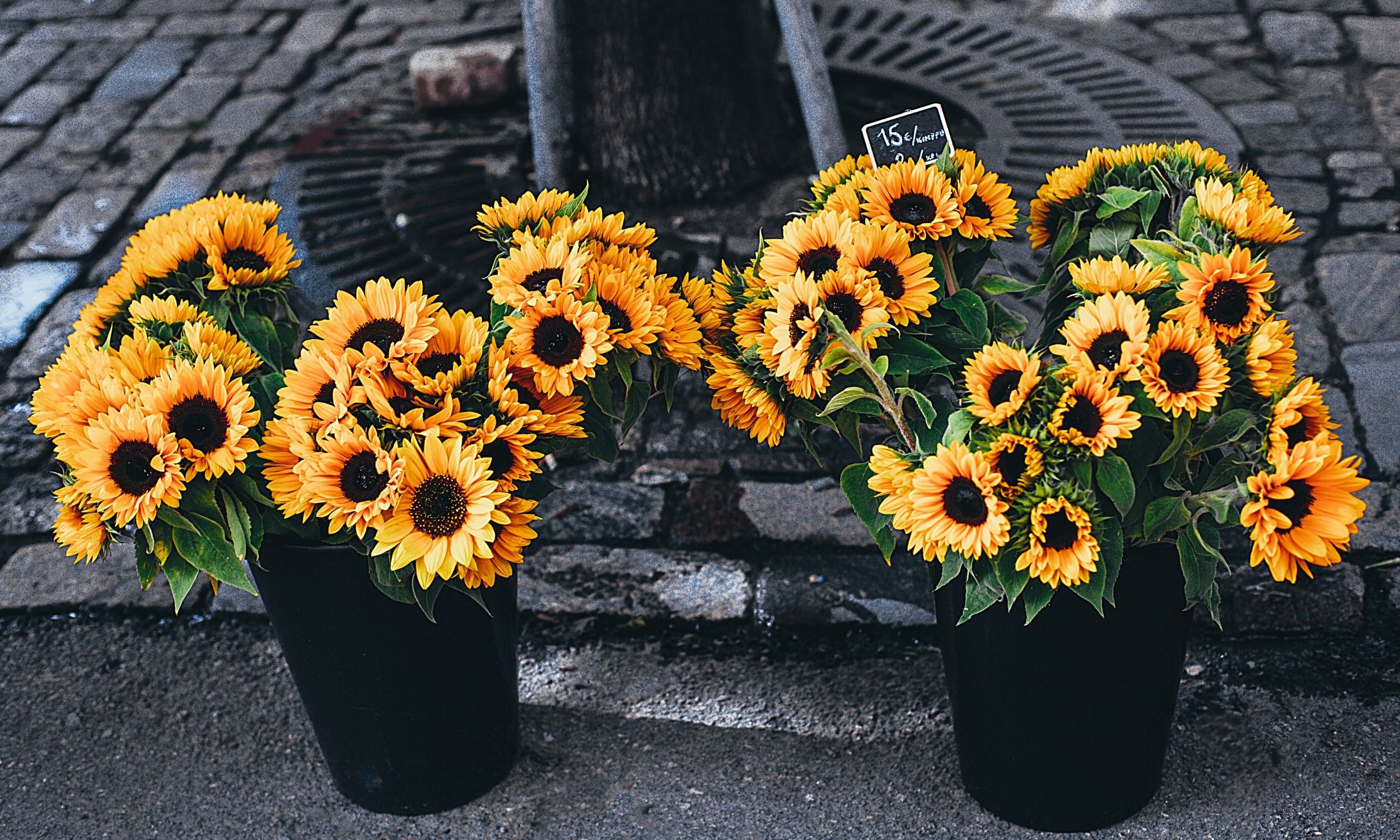Choose the Best Sunflower Varieties
Did you know that there are two types of sunflowers?? And each is suited for different purposes? Well I didn’t and when I learned this it was a game changer in what I grew to sell in our Market Stand. Make sure you are choosing the Best Sunflower Varieties!!
The two types of sunflowers are: single stem types and branching types. These two types are so different from one another that I almost think of them as different crops. I grow the single-stem types because they are preferred in my market, but I can see where some growers would do better with the branching types. Here are some pros and cons of each type.
Disclosure: Some of the links below are affiliate links, meaning, at no additional cost to you, I will earn a commission if you click through and make a purchase.
Single Stem Sunflowers
Single-stem varieties, including the Sunrich and ProCut series, are pollenless hybrids, which means they do not drop pollen on furniture, tablecloths, and clothing, as non-hybrid sunflowers do. While pollenless varieties do still produce nectar, and thus sustain nectar-feeding organisms such as butterflies and hoverflies, all bees need both nectar and pollen to survive. Pollenless sunflower varieties planted in proximity to “regular” (bisexual) sunflowers are likely to be visited and pollinated to some extent by pollinators that have visited the regular flowers. And, if left to mature on the stem rather than being cut, they will also be likely to produce some seed.
Continuing on the plus side, many single-stem sunflower varieties are really quick to bloom, needing just 60 days from seeding date to reach harvestability. In addition, there is a good selection of “day-neutral” single-stem varieties that can be grown in a hoophouse early in spring or late in fall.
Single-stemmed plants are more mutable than branching types in regard to the size of the flower you choose to produce. The plants can either be crowded into a 6″ x 6″ spacing to produce smaller, bouquet-sized flowers; or they can be spaced a foot apart to produce dinner-plate sized flowers.
Single-stem varieties additionally have strong, thick stems and flowers of substance that make a statement and fill out a bouquet. And their vase life is amazing, particularly the pollenless ones — up to 2 weeks in plain water.
On the other hand, single-stem sunflowers produce just one flower from one seed. This means you need to succession-plant single-stem sunflowers every 10–14 days, all season, if you want to have a continuous supply. If you’re selling your blooms, you would need to charge more for single-stemmed cuts to make a good return on your investment.

Common Single Stem Sunflowers
- ProCut White Nite Sunflower
- ‘ProCut White Nite’: Petals open with a creamy vanilla tint that turns white within a few days. Excellent choice if you are looking for a variety for weddings or to dye.
- ‘ProCut Orange Excel’: Earliest variety
- ‘ProCut Orange DMR’: Best selection for downy mildew-resistance
- ‘ProCut Horizon’: Most uniform in appearance and harvest date:
- ‘ProCut White Lite’ & ‘ProCut White Nite’: Perfect for when you want to “grow pale and interesting”:
- ‘ProCut Red’: Best single-stemmed sultry redhead
- ‘ProCut Horizon’: Most uniform in appearance and harvest date
- ‘Vincent’s Choice’: Beloved for its upfacing “lollipop” appearance
- ‘Full Sun Improved’: Best for winter production in the South; tall and stately, with classical good looks
- ‘Sunrich Limoncello Summer’: Best for the “3D look” under lower light intensity (early summer, late summer, and greenhouse conditions), drawing the eye from its creamy lemon tips into vibrant yellow petals toward a mesmerizingly dark disk
- ‘Royal Hybrid 1121’: Best for banner yields of delicious edible seeds
Branching Sunflowers
Branching sunflower varieties produce numerous blooms over a long period of time, so they don’t need to be succession-planted as frequently. There are numerous unusual colors among the branching varieties, including burgundy, chocolate, bronze, and bicolors. Most of the doubles (with blooms that have more than one layer of petals) are branching types. In other words, this category has a lot of pizzazz.
On the other hand, the stems on most branching sunflowers are neither as long nor as strong as those of single-stem varieties. Most need 65 days or more to bloom, and they also require a lot more space; they should be planted 18″ apart. And their lengthier production cycle lends insects and disease more opportunity to attack the plants. Yet by growing branching types, you are at the same time sustaining the beneficial organisms that rely on them. Many branching cultivars do produce copious amounts of pollen — look for those identified as pollenless if you think this is going to be a problem for your customers. And as a group, the branching varieties are not especially long-lived in the vase, some with just 5 days of vase life.

Grow Beautiful Flowers
Our beginner gardening course for anyone who wants to grow beautiful flowers in their backyard and fill all of the vases in their home.
Common Branching Sunflowers
- ‘Chocolate’: Good choice for attracting and sustaining bees and other pollinating insects.
- ‘Sonja’ & ‘Soraya’: Best branching varieties for cut-flower bouquets, with strong stems and small, uniform upright blooms
- ‘Buttercream’: Best light-bloomed, quick-growing, pollenless variety
- ‘Moulin Rouge’: Best strong-stemmed, pollenless burgundy variety
- ‘Strawberry Blonde’: Best multicolored, pollenless, day-length-neutral variety
- ‘Strawberry Lemonade Mix’: Smart choice for a prolonged harvest window, with early and prolific blooms in a punch-pretty palette
- Organic ‘Goldy Double’: Best for bright gold, lavishly-double blooms borne atop towering plants
- ‘Florenza’: Best sunflower for fragrant bouquets
- ‘Firecracker’: Best for blasting out consistent, bicolor blooms on short, sturdy plants
- ‘Teddy Bear’: Cuddle-worthy children’s favorite for container-growing

Sunflowers are a must-have in our cut flower garden and I am always looking for new varieties to try.
Want to know more about sunflowers make sure you check out- Everything Sunflowers

